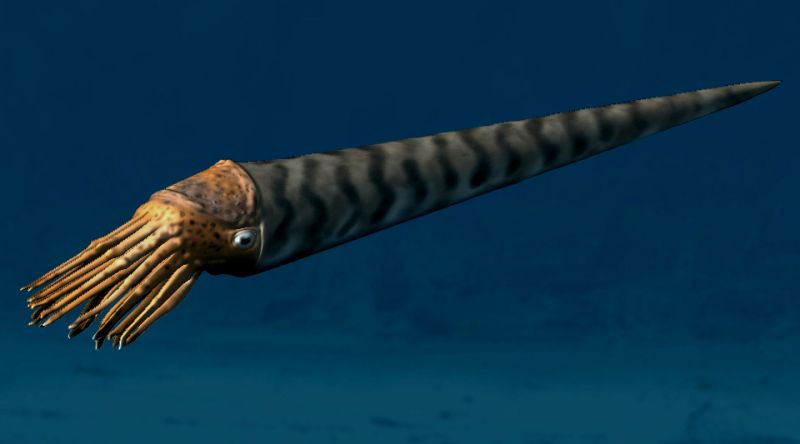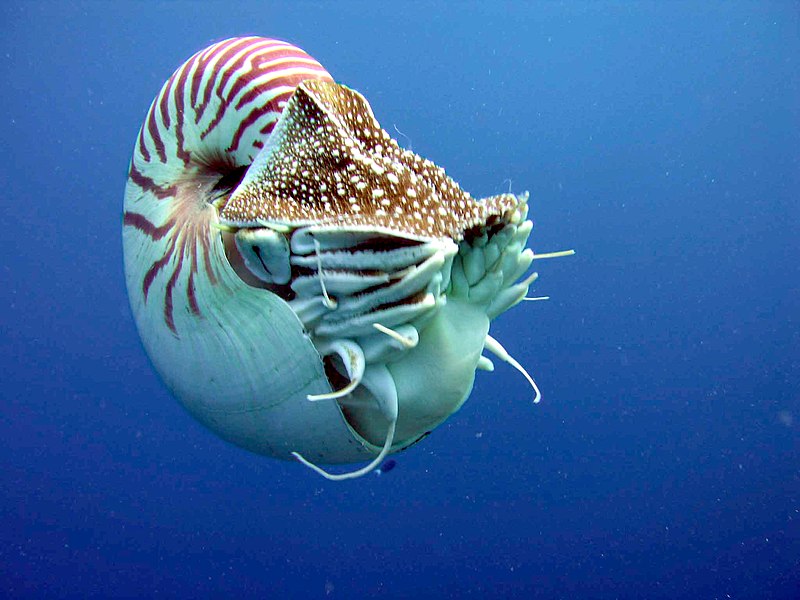500 million years ago, at the time of the Cambrian Explosion, there was no life on land. The ocean held plenty of trilobites and other animals, but they all lived on the seafloor--almost nobody swam freely in the water. Plectronocerus, the first fossil cephalopod, evolved and crawled on the floor just like everyone else.
But pretty soon cephalopods began to defy gravity, filling their shells with buoyant gas. Like deadly dirigibles, they cruised through the water and attacked their unsuspecting prey from above. These first swimming cephalopods were straight-shelled nautiloids. Weightlessness from the buoyant shell made them some of the first really big animals in the world--up to four feet long! For a while they were the planet's dominant predators.

It was too good to last. The Devonian began 400 million years ago--the Age of Fish. Sharks showed up and probably loved to snack on nautiloids. At this time, two new branches of cephalopods evolved--ammonoids and coleoids--possibly in response to competitive pressure from all the new fish in the sea.
They did fairly well for themselves, but the mass extinction at the end of the Cretaceous, which ended the dinosaurs' rule on land, also ended the cephalopods' rule in the sea. The ammonoids didn't make it, but a few coleoids and nautiloids squeaked through. Their descendants are with us today--just like modern birds that evolved from the few surviving dinosaurs!






Comments